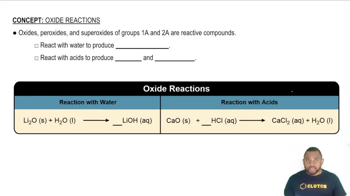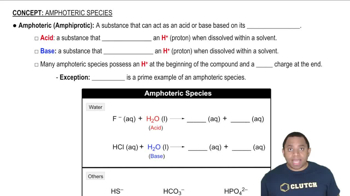Textbook Question
Write balanced equations for each of the following reactions.
b. When copper(II) nitrate is heated strongly, it decomposes to form copper(II) oxide, nitrogen dioxide, and oxygen.
e. Potassium peroxide reacts with CO2(g) to give potassium carbonate and O2.



